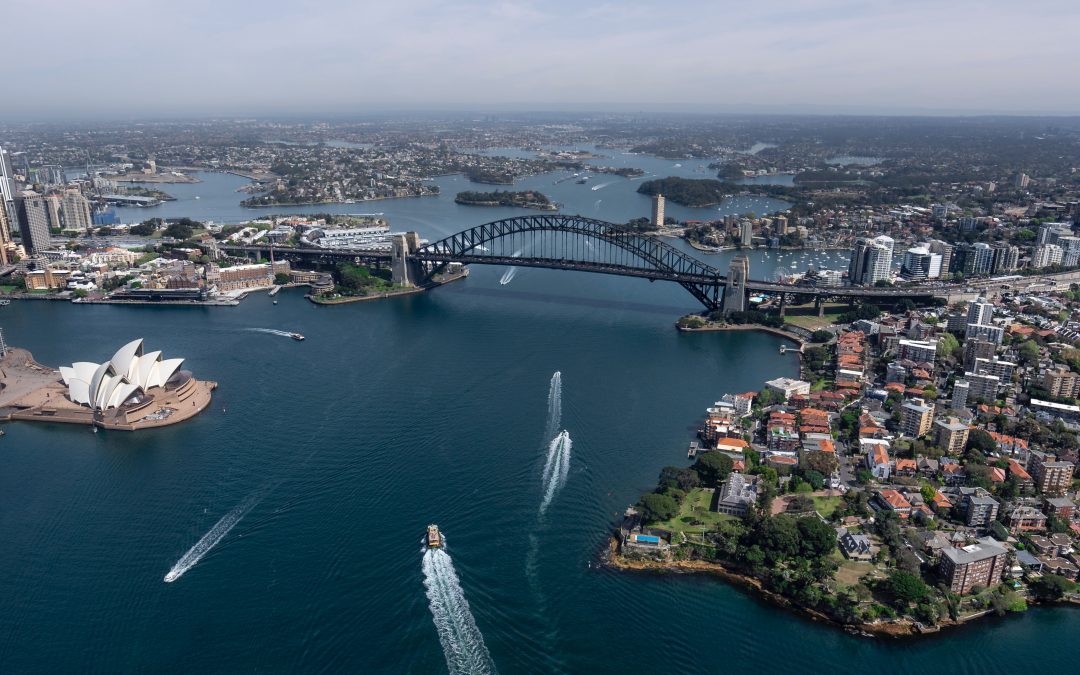Australia is in the middle of an infrastructure boom, one that is unprecedented in recent times, and according to experts will continue for the next five to 15 years. The current boom is vastly different from projects of yesteryear, which concentrated on social infrastructure; hospitals, prisons and schools. Infrastructure mega-projects happening now are mainly around transport, mining and energy.
Balancing environmental and community concerns, interfacing with existing transport networks, often inclusive of planning and funding across multiple governments and the private sector, the projects attract added complexity and costs. A major project that used to cost $500m can now cost $5 billion.
Infrastructure: Important Rural Connections for our States
While Sydney and Melbourne’s major city based projects are widely reported on there are many more mega-projects going on all over the country, to connect us and cope with our continuing population growth. They aim to increase economic growth and support regional job opportunities, and to meet growth and housing needs. There is focus on better connections to and within rural areas, via major capital cities and highways.
Tasmania’s will undertake road upgrades on their major highways and roads, including road widening and overtaking lanes. Bridge upgrades and strengthening will be undertaken for predicted increased heavy vehicle traffic, and Bruny Island road sealing will ensure safer tourist routes.
The Bruce Highway Upgrade between Brisbane and Cairns is the largest road infrastructure project ever undertaken by the Queensland Government. It commenced in 2013, and it’s predicted to deliver $12.6 billion worth of work over a 15 year period. Aimed to boost productivity economic growth and employment, safety and flood resistance, it’s already achieved the delivery of 122km of safer roadsides with 154km of wide centreline treatments, 51 bridges and 27 new rest stops.
South Australia is undertaking an upgrade of the North-South Corridor. Deemed as one of Adelaide’s most important transport corridors, particularly for freight vehicles, it will cover a distance of 78 kilometres between Gawler and Old Noarlunga. Additionally its initiative for ‘Roads of Strategic Importance’ campaign has seen a commitment of $275m for upgrades to parts of the Sturt Highway, the Barrier Highway, and the Eyre Highway from Port Augusta to the Western Australian border. $32million of that is earmarked for the upgrade of Eyre Peninsula roads due to the rail line closure.
Perth is undergoing one of the biggest transformations in its developmental history. Concentrating on its transportation infrastructure it includes the METRONET, and the Perth&Peel@35m strategy that details four comprehensive sub-regional plans for land use and infrastructure around Perth city to accommodate increasing growth and urban expansion. Further afield in Western Australia, it has major coastal infrastructure plans in Broome, Casuarina, Exmouth, Fremantle and Port Hedland among others.
In the Northern Territory, the Arnhem Highway will see upgrades across the Adelaide River Floodplain. It will enable safer travel during the wet season and reduce current road closures with raised road heights and multiple bridge and drainage structures. Further plans are for an Alternative Heavy Vehicle Route off the Stuart Highway to bypass Katherine, as to not hinder visitor and tourist growth to the Katherine town centre.
National Infrastructure: The Priority of Safety and Commercial Benefits
The Melbourne to Brisbane Inland Rail via regional Victoria, NSW and Queensland is scheduled to be completed around 2024-25. Projected at almost $10 billion, it’s one of the largest freight network developments in Australia, includes 13 individual projects, and spans more than 1,700 kilometres. The vision is to connect regional Australia to markets more efficiently, drive cost savings and deliver economic benefits to complete a world class supply chain.
Safety between Melbourne and Adelaide is seeing the Western Highway upgrade; to accommodate the expected double in numbers of vehicle and truck travel on the highway by 2025. Of priority is the highway between Ballarat and Stawell, that’s seen excessive accidents and fatalities in recent years.
Improvements to Australia’s longest shortcut, the Outback Way, will involve the sealing and widening sections of the 2700km road between WA and Queensland via Alice Springs.
Fundamentally, infrastructure projects today need to take into account many aspects and considerations. It should connect us, keep us safe, and provide essential services. From transport, communications, energy and social infrastructure projects, it should improve both our living standards and our national productivity capabilities. With our growing population, the boom will continue, along with the many complexities that the engineering community will face to meet the demands.


Recent Comments